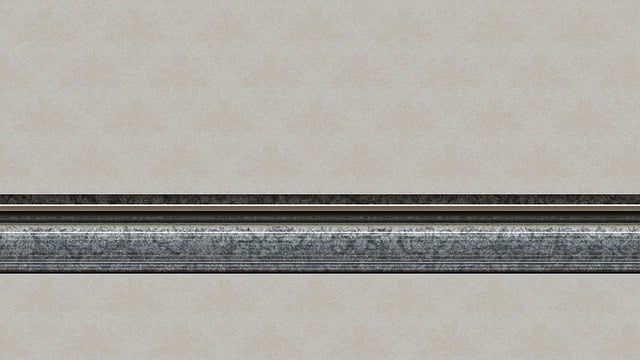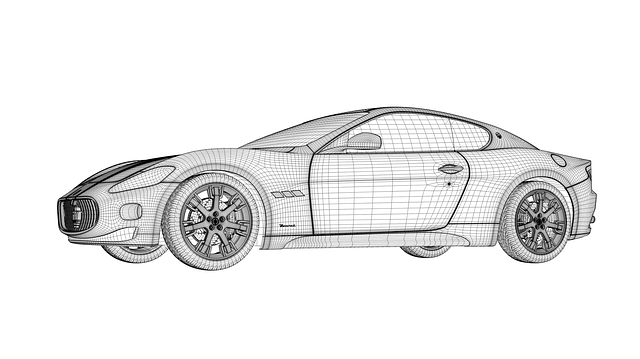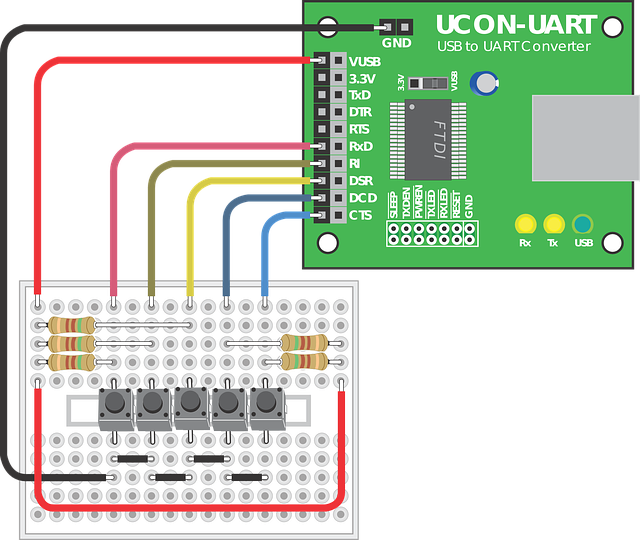3D printing has revolutionized customization and complexity in high-performance component fabrication, yet injection molding remains a pivotal technique in manufacturing due to its unmatched precision and efficiency. This process, which involves injecting molten material into a mold, excels in creating strong, lightweight parts for various industries, including automotive, aerospace, medical devices, and consumer electronics. Injection molding ensures intricate details and fine finishes, with materials ranging from engineering plastics to alloys meeting rigorous performance standards. Its consistent output, minimal waste, and swift production times make it ideal for applications where both high-quality parts and rapid turnaround are essential. The reliability and repeatability of injection molding have established it as an indispensable tool in the manufacturing sector, driving innovation and efficiency. With the integration of computational modeling, simulation, and advanced materials like composites and engineered plastics, injection molding is at the forefront of developing lightweight solutions that are both cutting-edge and eco-friendly, aligning with global sustainability objectives. In summary, injection molding's versatility, precision, and economic benefits make it a key player in modern manufacturing, ensuring strong, lightweight parts across various industries while balancing cost-effectiveness with environmental considerations.
Injection molding stands at the forefront of modern manufacturing, renowned for its ability to produce high-performance components that are both strong and lightweight. This article delves into the intricacies of this versatile process, highlighting its pivotal role in various industries. From enhancing durability and efficiency through cutting-edge innovations to showcasing customization capabilities that cater to a multitude of applications, injection molding’s impact is undeniable. Join us as we explore the precision, advancements, and success stories of injection molding, underscoring its significance in today’s manufacturing landscape.
- Unveiling the Precision of Injection Molding in Crafting High-Performance Components
- The Role of Advanced Materials in Injection Molding for Lightweight Applications
- Customization and Versatility: How Injection Molding Caters to a Wide Range of Industries
- Innovations in Injection Molding Technology for Enhanced Durability and Efficiency
- Case Studies: Success Stories Showcasing the Impact of Injection Molding on Diverse Applications
Unveiling the Precision of Injection Molding in Crafting High-Performance Components

3D printing has revolutionized the way high-performance components are crafted, offering a level of customization and complexity previously unattainable. However, injection molding remains an indispensable technique in the manufacturing landscape, particularly when it comes to producing strong, lightweight parts for diverse applications. This process, which involves injecting molten material into a mold, is celebrated for its precision and efficiency, enabling manufacturers to create complex geometries with excellent repeatability. The intricate details and fine finishes that injection molding can achieve are unparalleled, often resulting in components that are not only functional but also aesthetically pleasing.
The versatility of materials compatible with injection molding, including engineering plastics and alloys, allows for the production of parts that meet stringent performance criteria. These materials are selected based on their properties, such as resistance to chemicals, temperature stability, and mechanical strength. The result is a wide array of high-performance components used in sectors ranging from automotive and aerospace to medical devices and consumer electronics. Injection molding’s ability to consistently produce parts with minimal waste and short lead times makes it an ideal choice for industries that demand both quality and speed. The precision and consistency of injection molded parts have solidified its position as a key player in the manufacturing process, driving innovation and efficiency across various fields.
The Role of Advanced Materials in Injection Molding for Lightweight Applications

Injection molding has become a pivotal process in the production of lightweight components across various industries, from automotive to consumer electronics. The role of advanced materials in this context is critical, as they enable manufacturers to create parts that are both strong and significantly lighter than traditional alternatives. These high-performance materials, such as composites and engineered plastics, offer superior properties like enhanced durability, increased rigidity, and improved resistance to environmental factors. The precision of injection molding, combined with the tailored characteristics of these advanced materials, allows for intricate designs and complex geometries that were previously unattainable. This results in a reduction in material usage without compromising on the part’s performance, leading to fuel savings, reduced emissions, and extended product lifecycles in automotive applications, for instance. The integration of computational modeling and simulation tools further enhances the efficiency of the molding process, allowing manufacturers to optimize part design and material usage before the actual molding begins. This not only streamlines production but also reduces waste, aligning with global sustainability goals. As such, injection molding with advanced materials is a cornerstone for achieving lightweight solutions that are both innovative and environmentally conscious.
Customization and Versatility: How Injection Molding Caters to a Wide Range of Industries

Injection molding stands as a pivotal manufacturing process that excels in producing customized and lightweight components for an array of industries. This technique, which involves injecting molten material into a mold, is renowned for its ability to fabricate complex geometries with exceptional precision and repeatability. The versatility of injection molding allows it to cater to various sectors, including automotive, electronics, medical devices, packaging, and aerospace. Each industry leverages the process to meet specific requirements, whether it’s for creating durable car parts, intricate electronic housings, sterile medical instruments, or robust aircraft components. The material selection in injection molding is equally diverse, accommodating everything from traditional plastics like polycarbonate and ABS to more advanced polymers engineered for high performance under extreme conditions. This adaptability ensures that manufacturers can customize the properties of the final product to suit the demands of their industry, whether it’s for weight reduction, strength enhancement, or thermal resistance.
The economic benefits of injection molding further underscore its prevalence in modern manufacturing. By enabling large-scale production with minimal waste, this process significantly reduces material costs while maintaining high standards of part quality. The rapid cycling times and automation capabilities allow for quick adjustments to design specifications, making it an ideal choice for companies that need to adapt to market changes or produce limited-edition products without the need for extensive retooling. Moreover, the lightweight parts produced through injection molding often lead to reduced energy consumption and lower emissions in end-use applications, contributing to a more sustainable future. This eco-friendly aspect, combined with its versatility and cost-effectiveness, cements injection molding as a critical technology in the production of strong, lightweight components across various industries.
Innovations in Injection Molding Technology for Enhanced Durability and Efficiency

3D printing has revolutionized the manufacturing landscape, offering a level of customization and complexity previously unattainable. However, for applications demanding high production volumes, injection molding remains an indispensable process. Recent advancements in injection molding technology have significantly enhanced the durability and efficiency of parts produced through this method. Innovations such as the integration of high-performance polymers and advanced mold design have led to components that are not only more robust but also lighter, which is crucial for reducing energy consumption and extending product lifespans.
The introduction of smart mold technologies has been particularly transformative. These technologies enable real-time monitoring and adjustment of the injection molding process, ensuring consistent part quality and reducing waste. Additionally, the adoption of multi-component and overmolding techniques allows for complex geometries and integrated functionalities within a single part, which reduces the need for additional assembly steps and further improves efficiency. The precision and repeatability of modern injection molding machines, coupled with the versatility of the materials used, make them suitable for a wide array of industries, from automotive to consumer electronics, medical devices, and beyond. These technological strides ensure that injection molding continues to be a vital tool in the manufacturing arsenal, capable of adapting to evolving market demands and sustainability goals.
Case Studies: Success Stories Showcasing the Impact of Injection Molding on Diverse Applications

Injection molding technology has proven to be a game-changer across various industries, demonstrating its versatility and efficiency in producing strong, lightweight parts for diverse applications. One of the most compelling evidence of its impact comes from case studies that highlight success stories where injection molding has played a pivotal role. For instance, in the automotive sector, manufacturers have utilized injection molding to create durable components that meet stringent weight and performance requirements, leading to improved fuel efficiency and safety. In the healthcare industry, precision-injected molded parts such as medical device components and drug delivery systems have revolutionized patient care by providing reliable and sterile instruments essential for surgical procedures and medication administration. Furthermore, in the consumer electronics realm, injection molding’s ability to produce complex geometries with intricate details has enabled the creation of sleek and functional devices, from smartphone cases to high-performance computer parts. These case studies not only underscore the technical prowess of injection molding but also its economic benefits, including reduced material waste, shorter production cycles, and cost-effective manufacturing at scale. The adaptability of this process is evident in the wide array of applications it supports, ranging from high-precision components to large-scale industrial parts, thereby solidifying its position as a cornerstone technology in the modern manufacturing landscape.
Injection molding stands as a cornerstone technology in the modern manufacturing landscape, offering unparalleled precision and versatility in creating high-performance components across various industries. The strategic use of advanced materials has significantly expanded the capabilities of injection molding, enabling the production of lightweight parts that maintain strength and durability. This article has explored the transformative role of innovation within the field, highlighting how advancements continue to enhance both efficiency and effectiveness in this critical process. Through detailed case studies, we’ve seen firsthand the profound impact of these innovations, demonstrating the wide-ranging applications and economic benefits that injection molding provides. As industries evolve, the indispensable nature of injection molding becomes ever more evident, solidifying its role as a key driver in manufacturing excellence.
